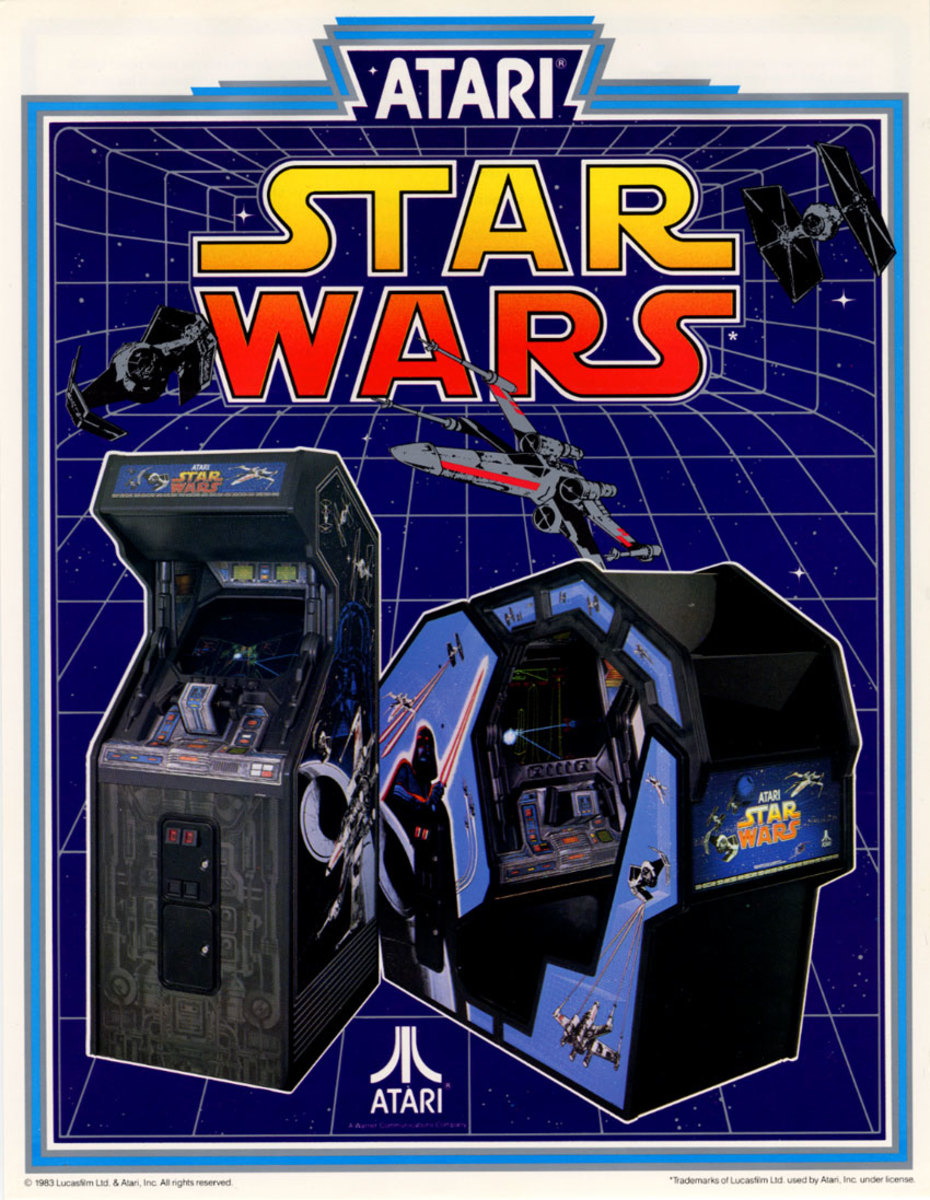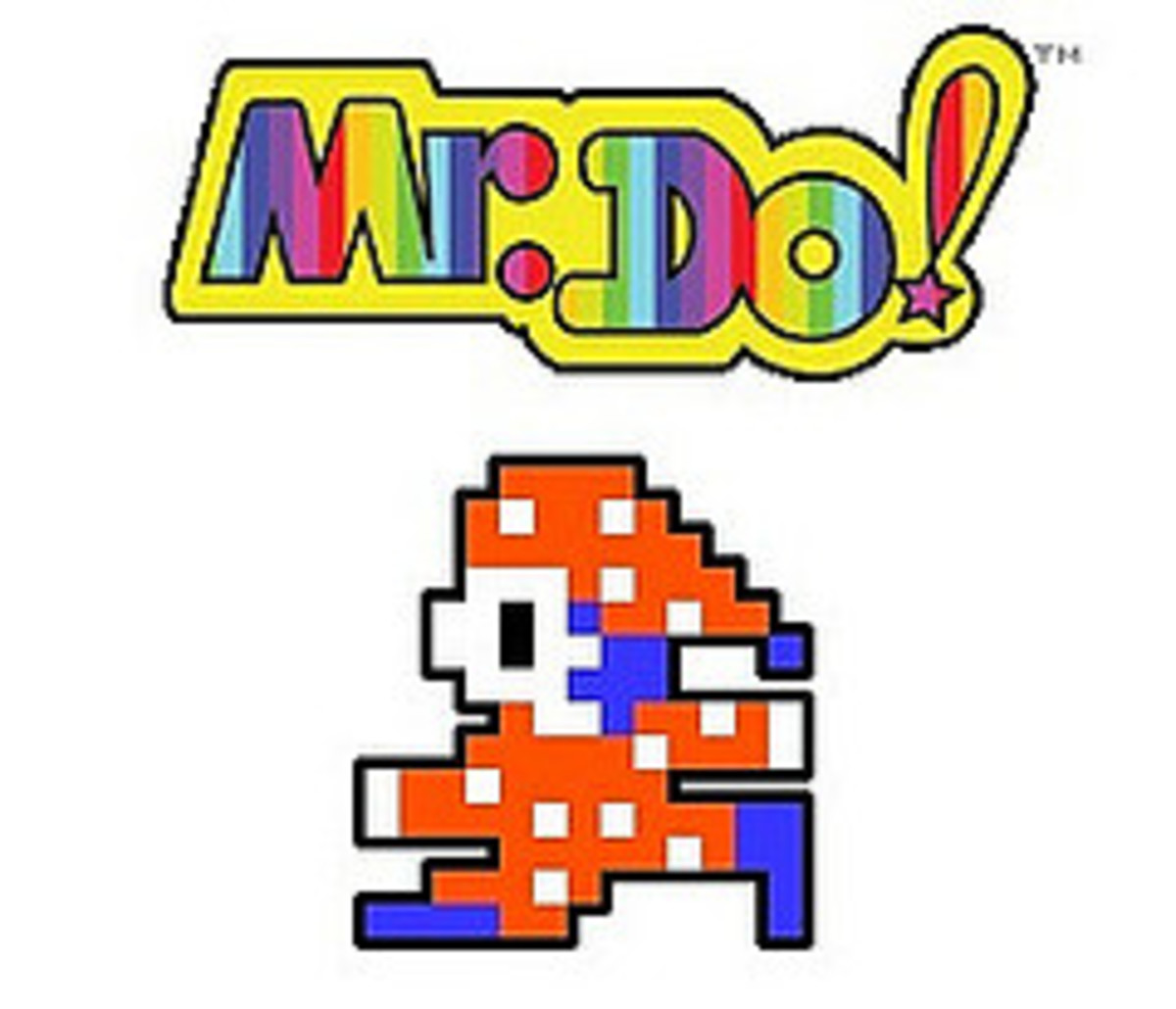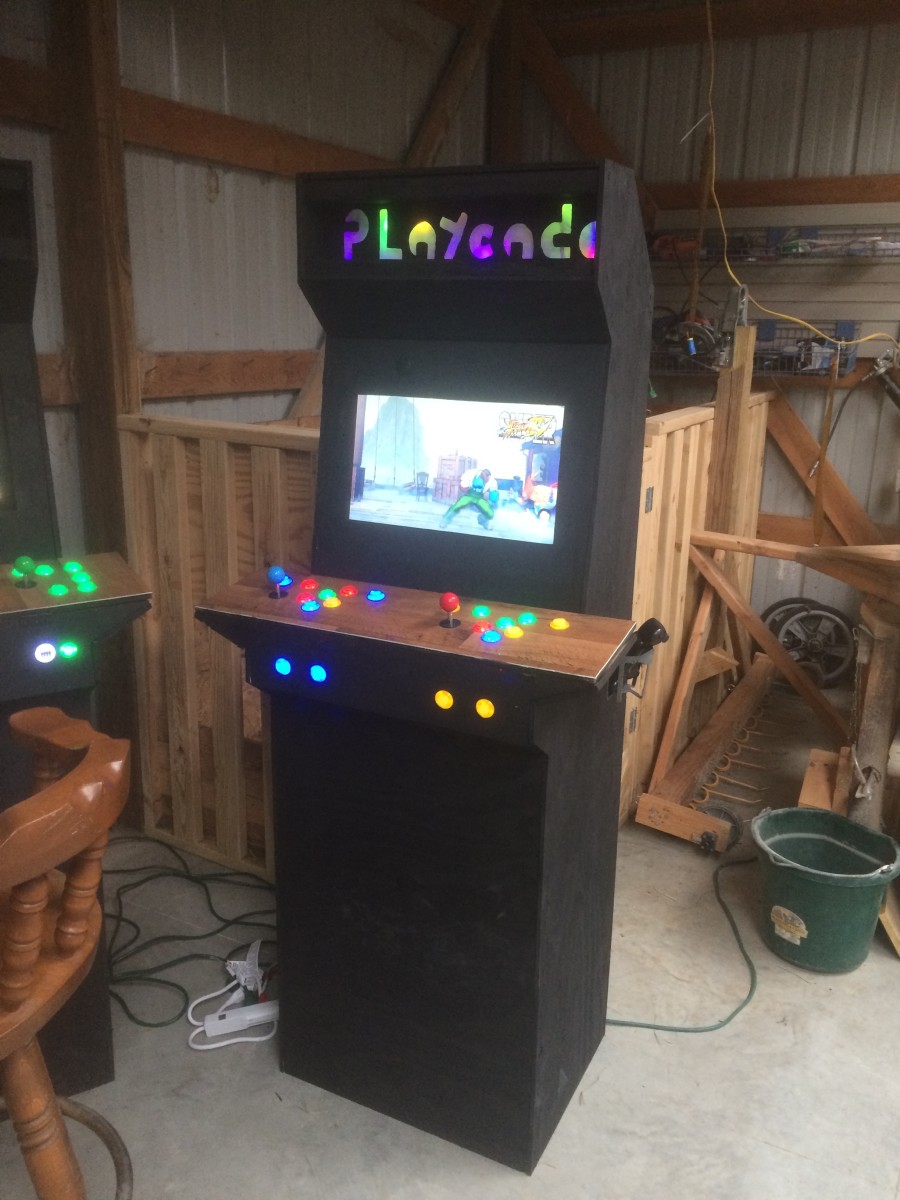Missile Command by Atari - Classic Arcade Games Reviewed
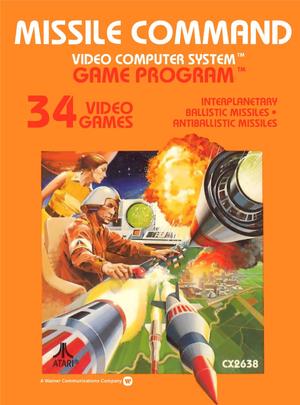
Background to the game
In my series of articles on classic arcade games, I have selected those titles that could objectively be classed as “iconic”, recognised by both gamers and non-gamers alike, not only as creative works but also as having historical and cultural significance. Missile Command was one such game, an arcade game released by Atari in 1980 and whose central theme resonated with a public facing the very real prospect of a global thermonuclear war.
In this game you must prevent your cities and nuclear missile silos from being destroyed by enemy missiles raining from the sky – a wrong move signalling the death of an entire population. This basic premise, and the historical context in which the game was launched, make Missile Command a snapshot of life in the early 1980’s.
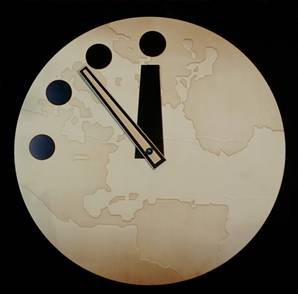
Historical Context
Missile Command was released at the height of the cold war, a time of heightening tensions between the US and the USSR, and a nuclear arms race that threatened a third world war. The proximity of nuclear conflict was represented by the Doomsday Clock, a symbolic measure of the current threat level - where midnight represented an event that could wipe out the entire human race.
Living at this time in the 80's, a time of relative prosperity in the western world, the threat level was very real with the clock being moved to 2 minutes to midnight, and this was reflected in popular culture. The Frankie Goes to Hollywood track "Two Tribes" typified the feeling of living in exciting but also very dangerous times, the accompanying video showing a brawl between then presidents Ronald Reagan and Konstantin Chernenko.
This theme was famously explored in the film "War Games" starring a young Matthew Broderick, a computer enthusiast (hacker was not a word back then) who accidentally triggers a missile defence system into action, threatening the launch of nuclear weapons by the US on the USSR. In this film (which also features arcade game Galaga) the message is that there are no winners in a nuclear war, and the only winning strategy is to avoid war in the first place.
So at the time, the Missile Command game was not seen as just an amusing diversion, it was a slightly unnerving glimpse into what might be, with its clinical representation of a defensive force that is ultimately powerless to prevent complete annihalation following a nuclear attack.
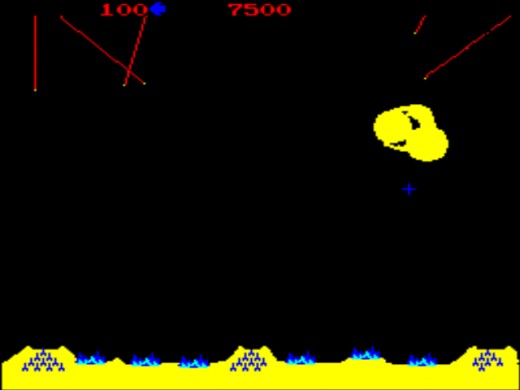
Gameplay
In Missile Command, you control a set of 3 missile batteries, viewed from afar, in defence of 6 cities. As the enemy launch their attack, represented by projectiles falling from the top of the screen on an angled trajectory, you must launch missiles aimed using a cross hair controlled by a large trackball. Each missile battery can fire a certain number of missiles, executed by the press of one of 3 buttons, which explode in a ball of flame taking out any inbound missiles which fall in the blast radius.
The game is therefore one of damage limitation and strategic use of available resources, with a well timed shot taking out more than one enemy missile, ensuring you have enough to defend all your cities. There is an interesting risk mechanic at play, as you are often left with a choice of saving your missile silo (which can also be destroyed) or a city but not both, with consequences for either decision. The distance between the battery and the missile is also a factor, as you have to aim at where the enemy projectile will be, not where it currently is, due to the time taken to launch.
High Score
The high score for Missile Command is currently held by UK gamer Tony Temple, with a score of 4,472,570 set on 10th September 2010
The stage ends when you have survived the onslaught with at least one city intact, which is rewarded by a new screen, rebuilt cities and a replenished arsenal, but more frenzied enemy attack waves. As well as the volume and speed of the missiles, the difficulty is ramped up by certain missiles splitting in two, and enemy attack planes dropping multiple missiles as they fly across the screen.
Ultimately it is impossible to “win” Missile Command, you can only register on the high score screen and avoid the chilling game over message, which in keeping with the game’s theme simply says “The End” in a flickering explosion. Many players will remember the feeling of watching helplessly whilst their cities are destroyed due to a lack of remaining missiles or batteries, waiting for the inevitable.
Home Conversions
A number of home conversions of Missile Command were released, all of which were hampered by not having the trackball control mechanism which was an intrinsic part of the original arcade game.
Of course Atari released the game on its 2600 platform, and given the graphical limitations of the console it was a very playable conversion and stands up well almost 30 years later.
More recently the game has been released on the iPhone and iPad as part of the Atari compilation, again suffering from the lack of feedback from the on screen controls, which still don't quite capture the feeling of a trackball.
Given the scarcity of original cabinets, Missile Command remains one of those arcade games that will be experience by few in its original state, outside of reproduction cabinets. Fortunately due to the preservation efforts of the team behind the MAME project, the game will remain playable in digital form for years to come.
Trivia
The cities in the game represented the Western coast of the US, and included Eureka, San Francisco, San Luis Obispo, Santa Barbara, Los Angeles, and San Diego
Missile Command Sequels
Super Missile Attack was released a year later in 1981 as an upgrade for existing cabinets, essentially just adding more cities and making the game slightly harder. Unfortunately the upgrade was an unofficial hack, not by Atari but by another company, General Computer Corporation, who were subsequently sued for their efforts.
An official sequel, Missile Command 2, was created a year later in 1982, this time as a 2 player variant on the original game, but was never officially released as it was claimed to be too easy.
In 1984 the tables were turned on players in Liberator, who were now tasked with being the invading force, and turning their own missiles on a defending population.

The End
Missile Command was a great game, an addictive score chaser, with frenetic gameplay and a unique control system. If this was it's only distinguishing feature then it may have joined the many hundreds of other long forgotton 80's arcade games. It's bleak theme and historical resonance will however ensure that anyone who played it at the time will remember it over 30 years later.
It wasn't just the players who were affected by the game. The Atari programmer, Dave Theurer, is said to have had nightmares whilst working on Missile Command, dreams in which the cities portrayed in the game were destroyed in real life by a nuclear attack.
The legacy of Missile Command will therefore be the message it conveyed about the very real threat of nuclear war in the early 80’s, and the futility of a game you can never truly win.

